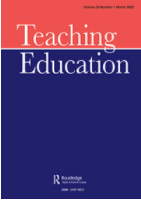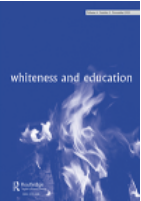There’s long been acknowledgement of the importance of embedding Indigenous content into the Australian curriculum and classrooms, however recent research tells us teachers are still quite apprehensive around doing so. There are long standing fears of getting it wrong, certain sensitivities at play, and a lack of awareness of how to Indigenise a classroom or apply appropriate Indigenous frameworks.
This problem is the focal point of a study currently in progress by Dr Tasha Riley, Troy Meston, Associate Professor Samantha Low-Choy, Dr Brittany McCormack and Julie Ballangarry, Indigenous scholar and HDR candidate, entitled “From being “too afraid to speak” to “too afraid not to”: Using arts based pedagogies to increase teachers’ confidence and capacity to address issues of race and Indigeneity in the classroom”
Dr Tasha Riley, the lead GIER researcher on the project, says,
“This study seeks to better equip teachers with the knowledge and ethical frameworks to interrogate their reluctance to ensure issues related to race and Indigeneity are treated with confidence and conviction.”
One way of doing this is through arts-based pedagogies, which can be used to build empathy and bypass barriers of cognition and language. An example highlighted is the use of Indigenous artists and poets to raise different perspectives on topics such as Invasion day, which can ask people to consider other perspectives drawing from a place of empathy, rather than judgement.
Dr Tasha Riley says,
“One of the things about social justice education is the need to bring about purposeful change, whereby moments of transformation and awareness are felt more through deeper learning processes, which can be enacted by the arts.”
The study is in the data collection phase and Queensland teachers who have an interest in embedding Indigenous knowledges or want to learn more about this process, are encouraged to participate here.
Watch this space for the release of a publication under review, entitled, From Yarning Circles to Zoom: Navigating sensitive issues within Indigenous Education in an online space as part of a special issue on “The place and space of Indigenous worldviews and priorities within policy and action” in the International Journal of Inclusive Education.
Relevant research connected to this project includes:

Feature photo by Alessia Francischiello on Unsplash



